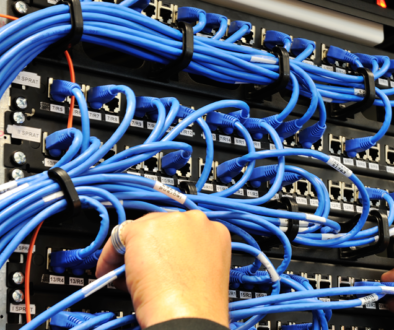How to Assess the Condition of a Used LED Wall
Investing in a used LED wall can be a cost-effective way to enhance visual displays for concerts, corporate events, or retail environments. However, when considering a used LED wall for sale, it’s crucial to assess its condition thoroughly to ensure you get a reliable and high-quality product. The key factors to consider when evaluating the condition of a used LED wall are as follows:
Step 1: Visual Inspection
A thorough visual inspection is the first step in assessing a used LED wall. Carefully examine the LED panels and frames for any signs of physical damage or wear and tear. Look for:
- Cracked or damaged LED panels
- Scratches or dents on the frame
- Loose or missing screws and fasteners
- Burnt-out or malfunctioning LEDs
- Discoloration or irregularities in the display
While some minor wear may be acceptable for older units, extensive damage or malfunctioning components should raise concerns about the unit’s overall condition.
Step 2: Functional Testing
Visual inspection alone isn’t sufficient. You need to conduct functional tests to ensure the LED wall is working. Follow these steps:
- Power On Test: Connect the LED wall to a power source and verify that it powers without issues. Pay close attention to any flickering, dead pixels, or irregularities in the display.
- Color and Brightness Test: Display various colors and test the brightness levels. Ensure that all colors are displayed accurately and there are no noticeable discrepancies or inconsistencies.
- Refresh Rate Test: Test the refresh rate by displaying fast-moving content, such as videos or animations. A quality LED wall should handle high refresh rates without artifacts or blurring. If you plan to use the screen with cameras, test that as well to ensure that you don’t capture any flicker in a camera’s shutter.
- Panel Alignment Test: Check if the panels are properly aligned and calibrated. Misaligned panels can lead to visual distortions.
- Input Sources Test: Test all available input sources (HDMI, DisplayPort, etc.) to verify that they work correctly.
- Remote Control Test: If the LED wall has a remote control, ensure all functions and settings can be adjusted without issues.
Step 3: Age and Usage History
The age of the used LED wall and its usage history are critical factors in assessing its condition. Older units may have a higher likelihood of component wear and may not meet the performance standards of newer models. Request the following information:
- The date of manufacture or purchase
- LED Batch or Bin
- The number of operational hours (if available)
- Any maintenance or repair history
- The reason for selling (upgrading or retiring)
Knowing the usage history can provide valuable insights into how well the LED wall has been maintained and whether it has undergone any major repairs or refurbishments.
Step 4: Pixel Pitch and Resolution
Consider the pixel pitch and resolution of the used LED wall. Pixel pitch is the distance between individual pixels and directly affects image quality. A smaller pixel pitch results in higher resolution and finer image details. Ensure the pixel pitch aligns with your specific needs and application for close-up viewing or large-scale displays. A general rule of thumb is for every mm of pixel pitch, your viewer should be ~1m away.
Step 5: Warranty and Support
Inquire about any remaining warranty on the used LED wall, if applicable. Some manufacturers offer extended warranties or support packages that can provide peace of mind. Additionally, research the availability of technical support and spare parts for the model you’re considering. Reliable after-sales support can be crucial in addressing any issues arising after purchase.
Step 6: Viewing Conditions
When evaluating a used LED wall, take into account the viewing conditions in which it will be deployed:
- Viewing Distance: As mentioned above, determine the typical viewing distance of your audience. Opt for a smaller pixel pitch and higher resolution for close-up scenarios to ensure sharp, detailed images. On the other hand, larger pixel pitches may be suitable for outdoor events or larger venues where viewers are situated at a distance.
- Viewing Angle: Ensure that your intended audience will be inside the view angle of the product you’re considering. Most LED walls have a viewing angle of around 270 degrees, but some vary.
- Environmental Considerations: Assess whether the LED wall will be used indoors or outdoors. Outdoor displays need to be weather-resistant to withstand rain and varying temperatures, as well as wind loads. Indoor LED walls may require specific features like precise color accuracy and brightness control. Matching the LED wall to the environmental conditions is crucial for optimal performance and longevity.
- Installation Factors: Evaluate the ease of installation and compatibility with your venue. Consider mounting options, power requirements, and cable management to integrate the LED wall into your setup seamlessly. This ensures a hassle-free installation process without disruptions or safety concerns, enhancing the overall usability of the display.
Conclusion
Assessing the condition of a used LED wall is a critical step in making a confident and informed purchase. Following the steps outlined in this guide, you can thoroughly evaluate the LED wall’s physical condition, functionality, age, and suitability for your specific needs. Remember that purchasing from a reputable source is key to finding a reliable LED wall.
For a wide selection of high-quality used LED walls and professional guidance, visit GearSource. Their expertise in audio-visual equipment and commitment to customer satisfaction make them an excellent choice for sourcing your next LED wall. Make an informed decision and elevate your visual displays with a reliable LED wall from GearSource.



